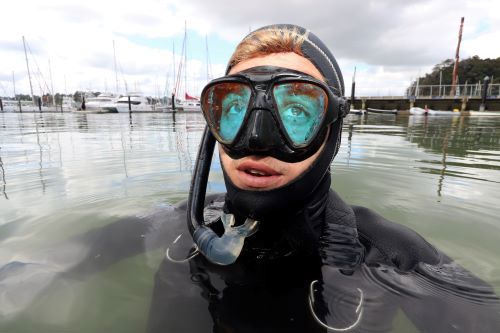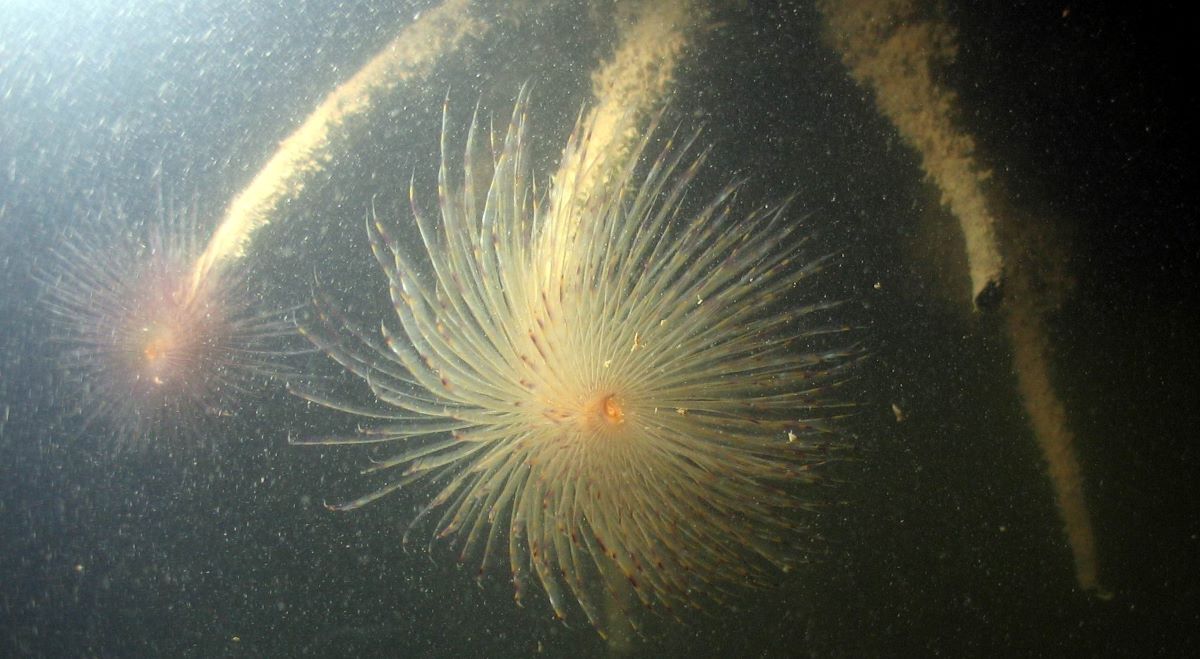Public praised for successes in ongoing marine pests battle
21 Aug 2020, 8:30 AM
Those charged with defending the region’s precious marine environment from invasive pests say it’s a tough fight, but an increasingly supportive public is allowing them to chalk up a number of successes.
 Cr Jack Craw, who chairs council’s Biosecurity and Biodiversity Working Party.
Cr Jack Craw, who chairs council’s Biosecurity and Biodiversity Working Party.
Councillor Jack Craw, who chairs the Northland Regional Council’s (NRC) Biosecurity and Biodiversity Working Party, says while the threat from a variety of marine pests is ever-present, Northland has had a successful 12 months across a number of fronts.
One of the crucial tools employed by the council is an annual hull inspection programme that targets everything from recreational boats to superyachts and fishing vessels to barges.
Councillor Craw says the inspection programme has been running for several years and typically begins in October, before vessel owners start travelling to new areas with the onset of warmer summer weather.
“Of the more than 2000 vessels checked last season, roughly one in five (389 of 2048 vessels) had been harbouring marine pests. Of those, 115 were harbouring Mediterranean fanworm (Sabella spallanzanii) or Undaria (an unwanted seaweed).”
Of the 115 with marine pests of particular concern, 45 owners had received formal ‘Notices of Direction’ requiring them to haul their vessels out and clean or treat them in a timeframe appropriate to the level of risk. Thirty-two others had their offending pests removed by council’s contract divers and 38 had been resolved without enforcement action. Two warnings and one infringement notice had been issued, the latter in response to a heavily-infested vessel hull in Mangonui.
“Currently 15 out of Northland’s 17 harbours and significant marine areas are still fanworm-free and we’ve managed to successfully eradicate fanworm in Tutukaka. We’re keen to maintain these successes and build on them where possible.”
Councillor Craw says there had been 27 cases where fanworm had been discovered on vessels that had then immediately been required to clean/leave the area.
Of those 27 incidents, nine involved fanworm found while a boat was at anchor, nine in marina berths and nine on moorings. Pleasingly, only a third of the 27 cases had involved a cluster of more than 10 fanworm and only two or three were thought to have included those mature enough to reproduce, with none showing evidence of recent spawning events.
“The majority only had a few individuals in niche areas (like the base of the keel, and behind anodes and bow thrusters) representing a much lower biosecurity risk.”
Councillor Craw says the 27 cases were a good result for the region’s environment as all had been successfully detected in areas outside of Whangarei (a known Mediterranean fanworm spot) or Opua (where the pest is a more recent arrival that is being actively managed).
Efforts to control fanworm at Opua are continuing, with an additional $100,000 support expected over the next 12 months from the Ministry for Primary Industries and the council was also doing increased surveillance following the discovery of a fanworm-infested boat moored in Mangonui Harbour in February.
 A file (2018) shot of Paihia-based commercial diver Lars Foelsche hunting for unwanted Mediterranean fanworm at Opua.
A file (2018) shot of Paihia-based commercial diver Lars Foelsche hunting for unwanted Mediterranean fanworm at Opua.
After the discovery, by dive contractors, the 13.5 metre twin-masted ketch involved had been ordered out of the water for immediate cleaning.
In a joint response from the council and Biosecurity New Zealand, the area under and near its mooring site had also been intensively searched as had several other key structures and potential sites in the wider area that could be hiding fanworm.
Councillor Craw says public support is integral to successful marine biosecurity and he and his fellow councillors are thrilled at the level of engagement with the community.
“We’ve had literally dozens of calls over the past few months from concerned vessel owners/members of the public who have noticed unusual species and a number who have also provided positive feedback on our programme.”
“Passive surveillance and vessel owners calling in if they see anything unusual is a key part of a successful programme.”
“There’s also been a noticeable change in the public attitude to maintaining clean vessel hulls in recent years with many more boaties ensuring their hulls and associated equipment is clean.”
Councillor Craw says new NRC ‘in-water’ cleaning rules are now operative, providing a cost-effective cleaning option where infrastructure is lacking and the council was continuing to work with its biosecurity colleagues in three other northern regions to develop an inter-regional marine pathway plan.
“This inter-regional collaboration will ensure an improved and coordinated approach to prevent dirty hulls transporting marine pests and should mean vessels are arriving in Northland from other regions with clean hulls.”
He says a draft proposal is expected to be ready for consultation about the middle of next year.
“Council is also working with MPI and industry to address niche area issues by investigating a national standard for antifouling/cleaning.”
Collectively all this work boosts the resilience of our marine biosecurity network and ensures that we are as well-placed as possible to deal with any threats encountered.
Meanwhile, Cr Craw says the council’s own biosecurity experts had also notched up some great achievements in recent months, including the discovery in summer of a new to Northland – and unwanted – sea squirt, the Lightbulb ascidian (Clavelina lepadiformis).
“It was found in January on a vessel (which was on its way to Tutukaka) in Marsden Cove. Its concerned and helpful owner assisted staff by immediately organising for the vessel to be hauled and cleaned.”
Lightbulb ascidian is thought to have been in New Zealand since 2008 but until now, was only known to occur in the South Island and Wellington.
Originating from the Shetland Islands, the species has subsequently invaded Africa, Northwest Atlantic, the United States and others.
“It forms colonies of transparent tubes about 5cm long, with white, yellow or pink bands that make it appear to glow like a light bulb, hence its name.”
Most commonly spread on vessel hulls, Cr Craw says it’s a problem because like Mediterranean fanworm and other marine pest species, it can form large colonies on hard surfaces such as marinas and rocky sub-tidal and inter-tidal habitats.
“These in turn then dominate disturbed habitats and can outcompete native species and may impact upon the mauri of the moana.”
Don McKenzie, Biosecurity Manager for the NRC says it’s vital boaties ensure their vessel and any associated equipment is clean and free from fouling which may contain marine pests like fanworm, especially if they were returning from/travelling to areas known to have established fanworm populations.
“Under regional council rules, it’s an offence to transport marine pests in Northland.” “Vessels entering Northland and moving between harbours must have no more than ‘light fouling’ on their vessel.” (Light fouling is classified as a slime layer and/or barnacles, and up to five percent macrofouling).
Mr McKenzie urges people encountering marine pests, or anything unusual, to notify the regional council as soon as possible by phoning (0800) 002 004 or emailing marinebiosecurity@nrc.govt.nz
He says information on a range of marine pests can be found at www.nrc.govt.nz/pestcontrolhub while the council’s rules and marina requirements can be found at www.marinepests.co.nz

Mediterranean fanworm.
